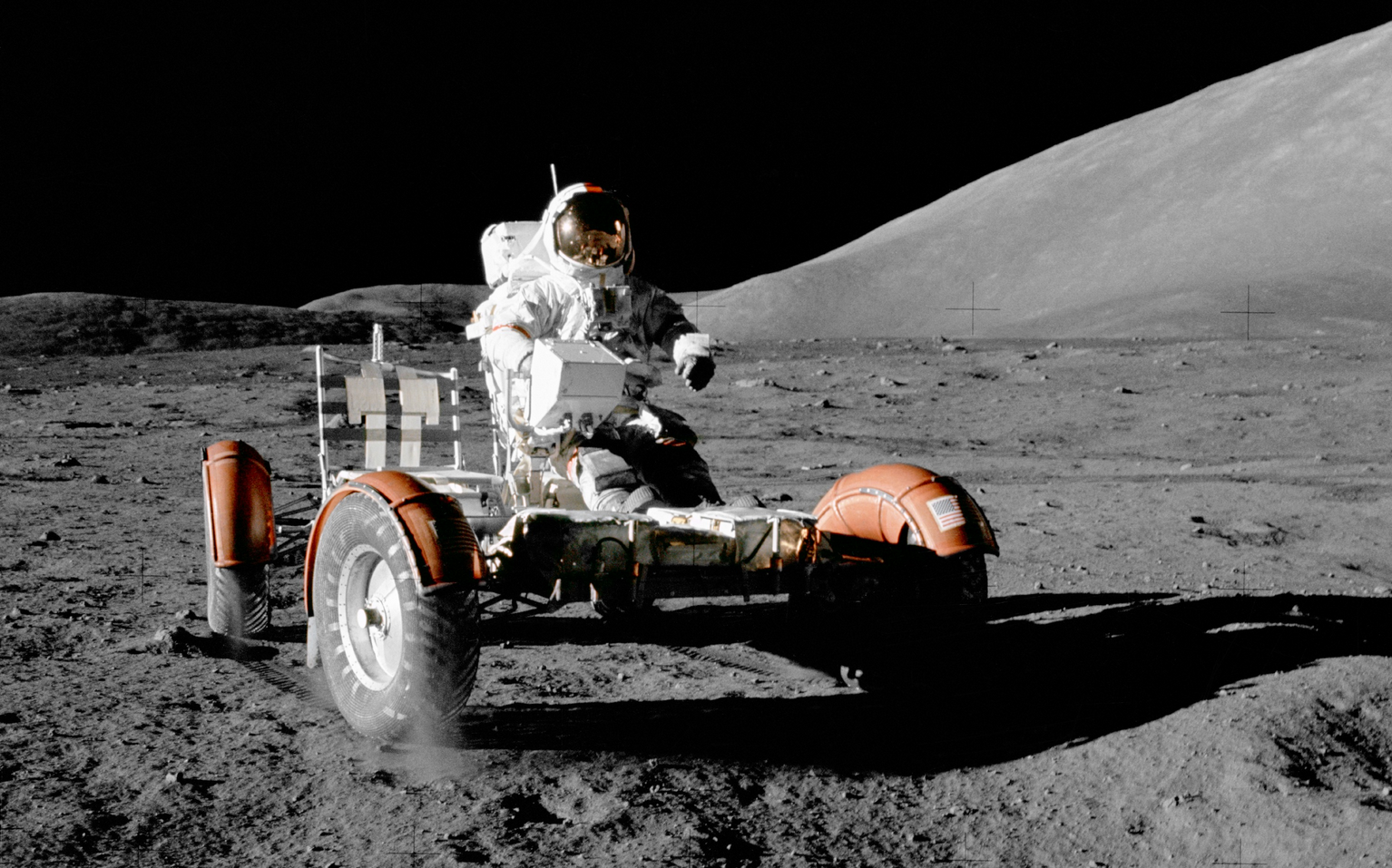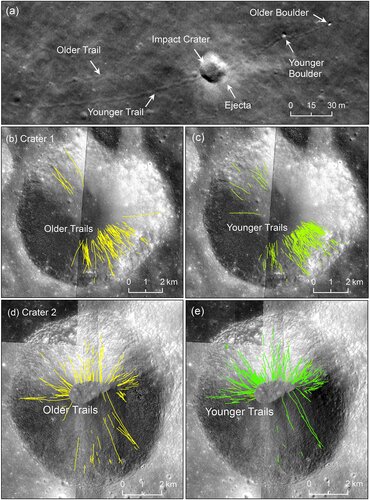Moonquake Detectives Decode Pattern Left on Lunar Surface Jan. 3, 1975
Here's what the moon pattern means.

At some point after astronauts visited the moon, a powerful moonquake sent boulders tumbling across the lunar surface.
Scientists already knew about the Jan. 3, 1975, moonquake. It was the most powerful of 28 that showed up in data from seismometers left behind by the Apollo 12, 14, 15 and 16 astronauts. But new research, published July 8 in the journal Geophysical Research Letters, shows that the moonquake actually changed the physical structure of the moon, knocking rocks around and creating steep embankments (or scarps) visible today in the regolith.
NASA doesn't have good images of the Laue impact crater, where the moonquake struck, showing the area just before and just after the shaking occurred. If the agency did have such images, it would be pretty easy for researchers to put the befores and afters side by side and show that this particular moonquake had formed the scarps and moved the boulders.
Instead, the researchers relied on a more straightforward observation: The powerful moonquake happened in 1975, and images from the Lunar Reconnaissance Orbiter (LRO) show that in the area around the impact crater there are boulder trails fresh enough to have formed that recently — and there are new-ish-looking, cliff-like scarps in that same area. [5 Strange, Cool Things We've Recently Learned About the Moon]
Scientists don't have a full picture of the mechanisms and structures that produce moonquakes, but suspect that the underlying principles are similar: Large sheets of rock press together at fault lines, building up energy. Then those fault lines shift, releasing some of that energy as large-scale vibrations.
Those scarps, the researchers noted, seem to fit a larger pattern on the lunar surface: They're lined up neatly with a big cliff that extends from either side of their home crater, called the Lorentz basin wall. The Laue Crater formed when a big space rock smashed into that giant wall, creating a miles-wide gap in the wall's structure. But the quakes that moved the lunar surface around to create those scarps seem to have re-created, in miniature, a small part of that larger wall. And these temblors did so in a region where the wall had been obliterated. That suggests that the wall is part of a still-active fault, which can slip, causing moonquakes.
There are other possible explanations, of course. Perhaps other giant rocks struck the moon, shaking things around. But the researchers did simulations of moon-shaking in their lab, finding that an internal fault, not an outside impact, most likely produced these patterns.
Sign up for the Live Science daily newsletter now
Get the world’s most fascinating discoveries delivered straight to your inbox.
Even further evidence for that idea: Careful study of the regolith in that area showed that the 1975 moonquake wasn't the only big shake to have hit that region.
An older, fainter set of boulder trails crisscrosses under the 1975 trails, the researchers found. About 1.6 million years ago (judging from the number of small craters that have peppered the trails since and the rate at which those craters are believed to form), another moonquake sent rocks tumbling down the same slope and formed older scarps. The moon has no atmosphere to wipe those trails away with wind, but small impacts and smaller quakes have caused the trails' to fade over the eons.

And there's even evidence of an older quake. Additional boulders lie at the bottom of the embankment, the researchers found, without trails leading to them. That suggests that at some point, or at many points, other quakes happened, but they occurred so many millions of years ago that the trails have entirely disappeared (but not so long ago that the boulders have crumbled to dust).
The moon's surface along that part of the Laue Crater is moving, and it's been moving for a long time. Perhaps, the researchers wrote, astronauts could visit the area during "future landing missions" and study in more detail what the heck is going on.
- 11 Fascinating Facts About Our Milky Way Galaxy
- Big Bang to Civilization: 10 Amazing Origin Events
- Spaced Out! 101 Astronomy Photos That Will Blow Your Mind
Originally published on Live Science.










